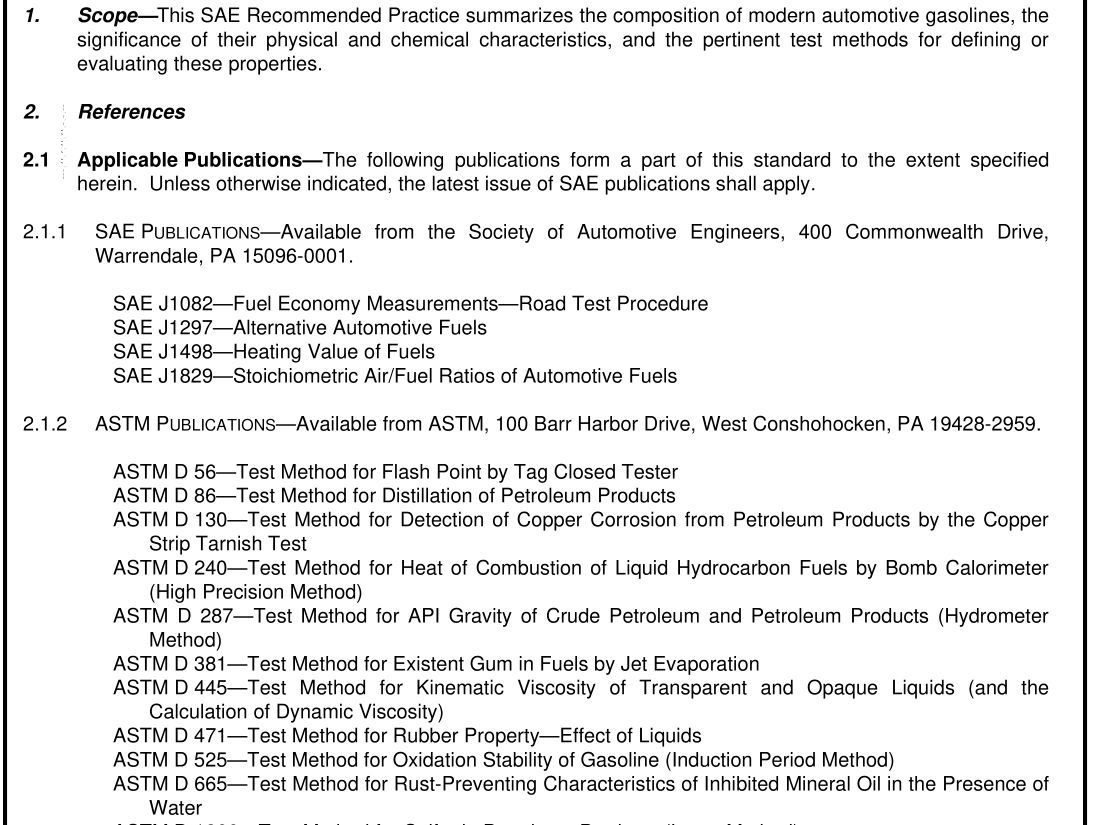SAE J312:2001 pdf download Automotive Gasolines
3. Antiknock Quality (1-8,66-67) —The antiknock quality of an automotive gasoline is of prime importance. If antiknock quality is too low, knock occurs. Knock results in a high-pitched metallic rapping noise. In addition to being audibly annoying, severe knock can cause burning of piston crowns and other engine damage. There is also evidence that knock increases the rate of engine wear.
The potential durability, power, and fuel economy of a given engine is realized only when the gasoline antiknock quality is adequate. However, except for some vehicles equipped with knock sensors, there is no advantage in using a gasoline having antiknock quality higher than the engine requires. Section 1 1 contains additional details on knock sensors and other engine design factors affecting octane number requirement. Knock depends on complex physical and chemical phenomena highly interrelated with engine design, engine operating conditions, and atmospheric conditions. It has not been possible to completely characterize the antiknock performance of gasoline by a single measurement. The antiknock performance of a gasoline is intimately related to the engine in which it is used and to the engine and transmission operating conditions. Furthermore, this relationship varies from one engine design to another and will be different among engines of the same design due to normal production variations. The antiknock quality of a gasoline is measured by several methods.
These employ single-cylinder laboratory engines and more realistic, but much less precise, multicylinder engines in cars on the road. The American Society for Testing and Materials (ASTM) has standardized the following two single-cylinder methods: ASTM D 2699 and ASTM D 2700. Both of these test procedures employ a variable-compression-ratio engine. The Motor method operates at a higher speed and inlet mixture temperature than does the Research method. They relate the knocking characteristics of a test gasoline to standard fuels, which are blends of two pure hydrocarbons—isooctane (2,2,4-trimethylpentane) and n-heptane.
These blends are called primary reference fuels. By definition, the octane number of isooctane is 1 00 and the octane number of n-heptane is zero. At octane levels below 1 00, the octane number of a given gasoline is the percentage by volume of isooctane in a blend with n-heptane that knocks with the same intensity at the same compression ratio as the gasoline when compared by one of the standardized engine test methods. The octane number of a gasoline greater than 1 00 is based on the milliliters of tetraethyllead required to be added to isooctane to produce knock with the same intensity as the reference gasoline. The number of milliliters of tetraethyllead in isooctane is converted to octane numbers greater than 1 00 by use of tables published by ASTM.
SAE J312:2001 pdf download
